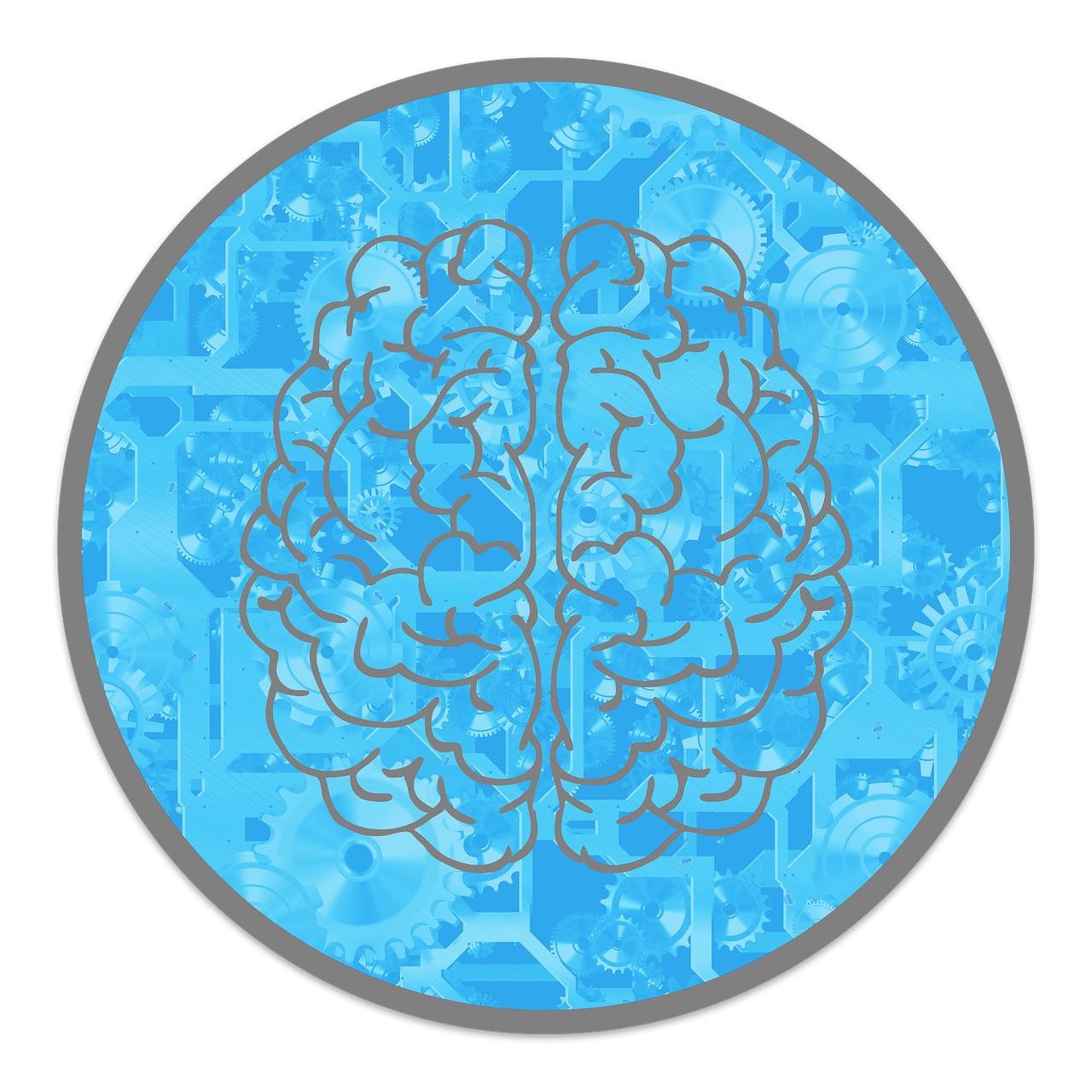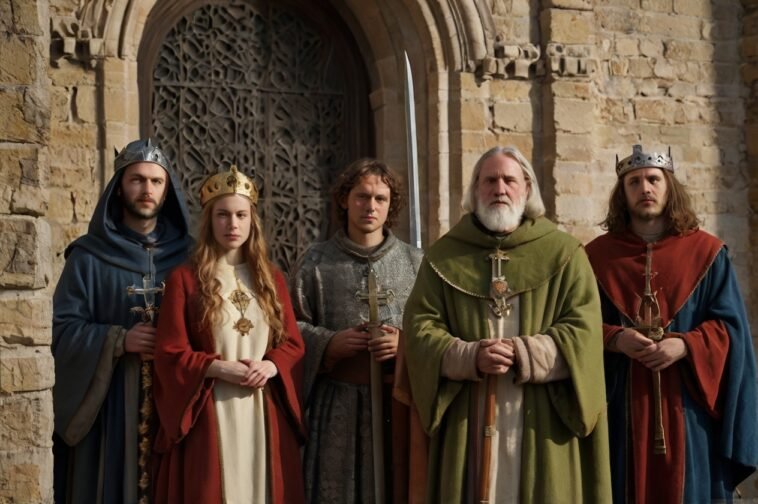
Medieval Europe was a time of deep religious influence, with the Catholic Church holding sway over nearly every aspect of life.
However, this era was also marked by the rise of controversial beliefs and heresies that challenged the Church’s authority.
These movements often emerged as a response to perceived corruption and excesses within the Church, sparking debates that would ultimately shape the religious landscape of Europe.
The Role of the Catholic Church
During the medieval period, the Catholic Church wasn’t just a religious institution; it was the heart of European society.
A source of spiritual guidance
For the people of medieval Europe, life was often uncertain and difficult.
War, famine, and disease were common, and the Church offered hope and stability in the face of these challenges.
Through rituals, sacraments, and teachings, the Church guided people on how to live moral lives and secure their place in heaven.
The center of education
In a time when literacy was rare, the Church was the primary source of education.
Monasteries, cathedrals, and universities run by the Church preserved and copied ancient texts, keeping knowledge alive.
Clergy were among the few who could read and write, which gave the Church a powerful role in shaping intellectual life.
Political and economic power
The Catholic Church wasn’t just a religious authority—it was also a major political and economic force.
It owned vast amounts of land and collected taxes, known as tithes, from people across Europe.
- Read also: A Historical Journey: The Spread of Christianity in the Middle Ages
- Read also: Unlocking the Gates of Knowledge: Education in The Medieval Era

Major Heretical Movements
During the medieval period, the Catholic Church was the dominant authority in Europe, but not everyone agreed with its teachings or practices.
Several groups, known as heretics, challenged the Church’s authority and sought to reform its ways or promote entirely different beliefs.
Let’s take a closer look at some of the most notable heretical movements and their impact on history.
Paulicians
The Paulicians emerged in the Byzantine Empire in the 7th century, rejecting the authority of the Church and its sacraments.
They believed in a dualistic worldview—a cosmic battle between the forces of good and evil.
For them, the material world was tainted by evil, and they sought to follow a purer, spiritual path.
Their ideas eventually spread to Western Europe, influencing later heretical movements.
Bogomils
Originating in Bulgaria in the 10th century, the Bogomils combined Christian teachings with dualistic beliefs.
They opposed the Church’s rigid hierarchy and called for a return to the simple and humble practices of the apostles.
They focused on spiritual purity and rejected the wealth and corruption they saw in the established Church.
Over time, their teachings inspired other groups, such as the Cathars.
Cathars
The Cathars were a prominent group active in southern France during the 12th and 13th centuries.
They viewed the material world as inherently evil and rejected the Church’s wealth and authority.
Instead, they emphasized a simple, spiritual way of life.
The Church saw them as a major threat and responded with the Albigensian Crusade, a brutal military campaign aimed at eradicating the Cathars through force and persecution.
Waldensians
The Waldensians were founded in the late 12th century by Peter Waldo, a wealthy merchant who embraced poverty and simple living.
They believed in preaching, reading scripture in the local language, and involving ordinary people in religious practices.
While they initially sought reform within the Church, they were declared heretical for their criticism of the Church’s hierarchy and their unauthorized preaching.
Lollards
In the late 14th century, the Lollards emerged in England, inspired by the teachings of John Wycliffe.
They criticized Church doctrines, translated the Bible into English, and challenged the wealth and power of the clergy.
The Lollards believed in personal interpretation of scripture, which was a radical idea at the time and laid the groundwork for later reform movements like the Protestant Reformation.
Hussites
The Hussites followed the teachings of Jan Hus, a Czech reformer who demanded significant changes within the Church.
They advocated for communion in both kinds (allowing all believers, not just clergy, to receive bread and wine) and condemned Church corruption.
Their resistance led to the Hussite Wars in the early 15th century, one of the most significant uprisings against the Catholic Church before the Reformation.

The Church’s Response to Heresies
As heretical movements grew and challenged the Catholic Church’s authority during the medieval period, the Church took significant steps to suppress them.
Let’s explore how it responded to these perceived threats and the deeper issues fueling dissent.
Inquisition and persecution
The Catholic Church established the Inquisition to identify and eliminate heresy.
This system involved formal investigations, trials, and severe punishments for those accused of spreading unorthodox beliefs.
Penalties ranged from excommunication—being cut off from the Church—to more extreme measures like execution.
One of the most notable examples of this was the Albigensian Crusade, a military campaign launched to eradicate the Cathars in southern France.
The Church didn’t hesitate to use force, viewing heretical groups as existential threats to its authority and unity.
Anti-clericalism
Many heresies weren’t just theological disagreements—they were also responses to widespread anti-clerical sentiments among the population.
Ordinary people were frustrated by:
- The Church’s vast wealth while much of Europe lived in poverty.
- The moral failings of some clergy, including corruption and hypocrisy.
- The Church’s perceived detachment from the daily struggles and spiritual needs of its followers.
These grievances fueled the growth of heretical movements, as they resonated with people seeking reform and a more authentic spiritual connection.
Common Themes and Characteristics of Medieval Heresies
Medieval heresies often reflected the growing frustrations of believers with the Catholic Church’s practices and priorities.
These movements shared a few recurring themes that shed light on their motivations and widespread appeal.
Criticism of church wealth and corruption
One of the most common grievances was aimed at the Church’s accumulation of wealth and departure from the ideals of humility and poverty taught by Jesus Christ.
Many heretical groups saw the lavish lifestyles of clergy and the Church’s focus on material riches as a betrayal of true Christian values.
Emphasis on scripture and personal interpretation
Heresies often pushed for greater access to scripture and emphasized the importance of personal interpretation.
By challenging the Church’s control over religious knowledge, these movements sought to empower ordinary believers to engage directly with their faith without relying entirely on clergy.
Desire for simpler, more apostolic Christianity
A longing for a return to the simplicity of early Christianity was another recurring theme.
Many heretics rejected the elaborate rituals, hierarchy, and ceremonies of the medieval Church, advocating for a more straightforward and spiritually pure practice of faith that mirrored the teachings of Christ and his apostles.
Social and economic factors
Heresies often gained traction among marginalized groups, such as peasants and the urban poor, who were disillusioned with the Church’s inability—or unwillingness—to address their hardships.
For these groups, heretical movements not only represented spiritual reform but also a call for justice and equality in an unequal society.

The Legacy of Medieval Heresies
The heretical movements of medieval Europe left a lasting mark on history, shaping religious thought and societal attitudes in ways that are still felt today.
Let’s explore their profound impact.
Impact on the reformation
Medieval heresies laid the groundwork for one of the most significant religious shifts in history: the Protestant Reformation.
Reformers like Martin Luther and John Wycliffe took inspiration from earlier critiques of the Church, particularly regarding its wealth, corruption, and hierarchy.
These earlier movements opened the door for widespread questioning of Church authority, which ultimately led to transformative changes in Christianity during the 16th century.
Development of religious tolerance
While the Church’s harsh suppression of heresies may have silenced dissent temporarily, it also sparked conversations about the need for religious tolerance.
Over time, the violent responses to those with differing beliefs underscored the dangers of enforcing uniformity and the value of coexistence.
These events helped lay the foundation for the idea of freedom of belief, a concept that resonates strongly in the modern era.
Ongoing relevance
The questions and debates raised by medieval heresies are far from obsolete.
They remain deeply relevant to modern discussions about the role of religious institutions, the balance between personal faith and organized religion, and the importance of questioning authority in spiritual matters.
These movements remind us that the quest for authenticity, simplicity, and truth in faith is a timeless pursuit.

- Read also: Unveiling the Mysteries: Exploring Medieval Era Facts and Beyond
- Read also: A Comprehensive Guide: Unraveling the Medieval Era Timeline
Final Thoughts
Medieval Europe’s heresies were more than just religious dissent; they were powerful expressions of resistance against an institution that dominated every aspect of life.
These movements challenged the status quo, paving the way for reform and change.
Understanding these controversies helps us appreciate the complexities of history and the enduring human quest for truth and meaning.



